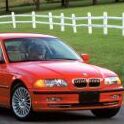The Mitsubishi Outlander PHEV was originally supposed to arrive in the U.S. a few years back. But the launch would be pushed back as the model would prove to be quite popular in Europe, causing Mitsubishi to reallocate supplies. Now, Mitsubishi has finally started selling the Outlander PHEV in the U.S. Was it worth the wait?
Much like the Eclipse Cross I posted a couple of weeks back, this first drive of the Outlander PHEV was quite brief. I only had about 15 to 20 miles of driving under my belt, while the rest saw me sitting in the passenger seat. Hopefully, in the near future, I’ll be able to spend some more time to give an overall impression.
- The Outlander PHEV wants everyone to know that it is a plug-in hybrid vehicle with PHEV decals on the rear doors and badges on the front fenders. Most people will find it to be a bit much. Otherwise, I like the Outlander’s shape with a boxy profile and slightly bold front end.
- The interior design is a bit plain, but most controls are within easy reach. The top-line GT I drove featured leather surfaces and plenty of soft-touch materials. I would have liked to see less piano black plastic used throughout as it becomes a fingerprint magnet.
- One issue with the Outlander PHEV’s interior is the placement of the Park button. Due to the location of the gear selector, it isn’t easy to find the button. My drive partner spent a few moments wondering where the button was before I pointed it out. Not the most user-friendly setup.
- Unlike the standard Outlander which offers three-rows of seating, the PHEV makes do with two. This is due to the placement of the battery pack in the back. I’m ok with this sacrifice as the third-row in the regular Outlander should only be used for emergencies due to the limited amount of space and uncomfortable seats.
- Powering the Outlander PHEV are two 80 horsepower electric motors. The one on the front axle produces 101 pound-feet and the one on the rear makes 144 pound-feet. A 2.0L DOHC four-cylinder with 117 horsepower and 137 lb-ft acts as the generator.
- There are three different driving modes on the Outlander PHEV: EV Mode, Series Hybrid mode (gas engine provides energy for electric motors for extra power and charges the battery), and Parallel Hybrid mode (gas engine power the wheels and electric motors).
- The plug-in hybrid system is very responsive in EV mode thanks to the instantaneous torque available from the two electric motors. In the Series Hybrid mode, the gas engine, for the most part, is muted and doesn’t intrude. Only during hard acceleration does the engine begin to make some racket. Transitions between the electric to the hybrid powertrain is very seamless.
- One disappointment is the range. Mitsubishi says the Outlander PHEV can travel up to 22 miles on a full charge. Chrysler’s bigger Pacifica Hybrid can go 32 miles on a full charge. A lot of this comes down to the Pacifica using a larger battery pack.
- Mitsubishi has introduced an updated Outlander PHEV for Japan and Europe that introduces larger battery pack and engine. The overall electric range has increased to 28 miles on the WLTP testing cycle. We’re wondering when this updated powertrain will arrive in the U.S. (2020?)
- Mitsubishi offers three different charging options for the Outlander PHEV - 120V, 240V, and a DC fast-charging through a CHAdeMO port. Charging times are eight hours with the 120V charger, 3.5 hours on the 240V, and 25 minutes for an 80 percent charge on the DC fast-charger.
- Six-levels of regenerative braking from B0 to B5 can be selected through a pair of paddles behind the wheel. I left the vehicle in B3 and found it to be a nice balance of regeneration without slowing the vehicle down too much.
- Handling is about what you might expect with a crossover. There is a fair amount of body roll when cornering and the steering feels somewhat light. Ride quality is quite nice as most bumps and imperfections are ironed out.
- The 2018 Outlander PHEV begins at $34,595 for the SEL S-AWC and $40,295 for the GT S-AWC. There is a tax credit available for the model, but be aware that only comes into play when you do your taxes. You cannot use it to help drop the price of the Outlander PHEV.
Disclaimer: Mitsubishi provided breakfast, a quick snack, and the Outlander PHEV for this first drive event.
Year: 2018
Make: Mitsubishi
Model: Outlander PHEV
Engine: 2.0L MIVEC DOHC, 16-valve Inline-Four (Gas Generator); Twin AC synchronous permanent magnetic motors
Driveline: Single-Speed Transmission, All-Wheel Drive
Horsepower @ RPM: 117 @ 4,500 (Gas); 80 @ 0 (Electric Motors)
Torque @ RPM: 137 @ 4,500 (Gas); 101 @ 0 (Front Electric Motor); 144 @ 0 (Rear Electric Motor)
Fuel Economy: Gas+Electric Combined/Combined - 74/25
Curb Weight: 4,178 lbs
Location of Manufacture: Okazaki, Aichi, Japan
Base Price: $34,595 (SEL S-AWC), $40,295 (GT S-AWC)





-3707742431.jpg.06edf8e14f4ccf35c60d4774a543cc11.jpg)


Recommended Comments
Join the conversation
You can post now and register later. If you have an account, sign in now to post with your account.
Note: Your post will require moderator approval before it will be visible.